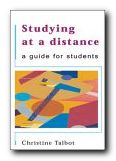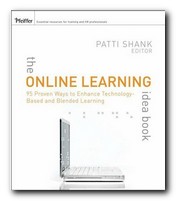up-to-date survey of online learning
Online learning is everywhere these days – for good reasons. Schools want to encourage the use of IT; colleges want their courses to be available 24/7; and universities want to sell their courses to people all around the world. eLearning: the key concepts is aimed at intermediate to advanced users which seeks to explain the main issues. An introductory essay clears the ground by looking at the many terms used in eLearning to describe what is sometimes almost the same thing (eLearning, distance learning, blended learning, flexible learning, and computer assisted learning).
 They are nearly the same, but not quite, and the authors do a good job of making the necessary distinctions. This also acts as a survey of the problems and possibilities of teaching and learning in the online world. They take account of such issues as the fact that many tutors in higher education receive no career advancement or recompense for the courses they might design. And they recognise that students are often more advanced than their conservative tutors in the adoption of digital technology and its multimedia attractions.
They are nearly the same, but not quite, and the authors do a good job of making the necessary distinctions. This also acts as a survey of the problems and possibilities of teaching and learning in the online world. They take account of such issues as the fact that many tutors in higher education receive no career advancement or recompense for the courses they might design. And they recognise that students are often more advanced than their conservative tutors in the adoption of digital technology and its multimedia attractions.
The second and major part of the book is an extended glossary of terms, explaining in detail everything from (alphabetically) ‘accessibility’ to ‘wireless networks’. All the entries are extensively cross-referenced, and there are web links to further resources where appropriate.
Some of the terms are to do with educational theory, such as ‘assessment’ and ‘problem-based learning’; others are technological, such as ‘open source software’ and ‘voice over Internet protocol (VOIP); and others deal with educational issues, such as ‘plagiarism’, ‘feedback’, and ‘quality assurance’.
Wherever possible, they give examples of the topic. Defending the use of video animations and blogging as educational tools for instance, they give examples of sites where these techniques are being used to advantage.
They have some interesting things to say about ‘learning objects’ – small, subject-independent re-usable units of teaching. These can be taken off the shelf and combined with others to save course designers the trouble of re-inventing wheels. They’re an amazingly good idea – yet very few people use them. Why? Because teachers traditionally wish to create their own materials, and they want to place the items of instruction in the context of their own subject discipline. It’s often said ironically of learning objects that they are the solution to a problem which has not yet been identified.
I have been designing and teaching online courses more or less since they first came into being, and this book seems to me as up to date as its possible to be in the plodding world of dead tree publishing. They missed the spectacular growth of Moodle which has replaced almost all other virtual learning environments (VLEs) in the last couple of years. But apart from that, everything you need to know about eLearning is well defined here.
© Roy Johnson 2006
Robin Mason and Frank Rennie, eLearning: the key concepts, London: Routledge, 2006, pp.158, ISBN: 0415373077
More on online learning
More on technology
More on digital media
More on web design
More on computers

